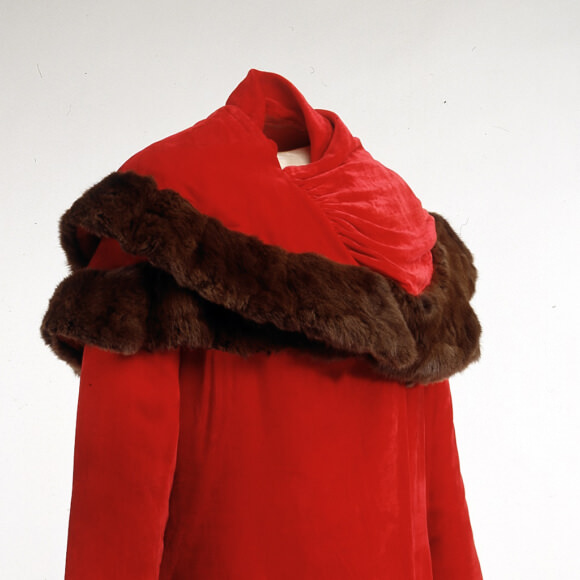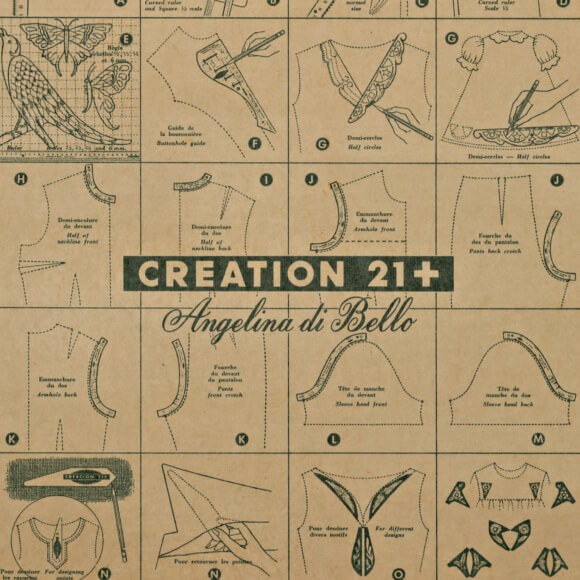A 1953 graduate of Montreal’s École des métiers commerciaux, Mario Di Nardo trained for one season with couturier Norbert Niewelt, where he improved his knowledge of European couture. Shortly thereafter, he began creating custom-made garments under his own name and the following year he opened an atelier on Peel Street, where he started to build a clientele. In 1958, he moved his fashion house to 2130 Crescent Street.
After presenting a solo collection in his first season, he was recruited by the Association of Canadian Couturiers in 1959 and joined their collective fashion shows until the group dissolved in 1968. As a representative of the Association, he took part in the Silhouettes exhibition at the Montreal Museum of Fine Arts in 1965, presenting three original garments.
Di Nardo excelled in the design of suits and coats. In keeping with his time, he also designed a lot of evening wear, ball dresses and wedding gowns. In addition to dressing wealthy upper-class women, who accounted for the bulk of his business, he made clothes for artists and television stars, such as Andrée Lachapelle, Denise Pelletier, Renée Claude, Monique Leyrac, and Michelle Tisseyre. Dominique Michel wore a Mario Di Nardo gown when she was crowned Miss Radio-Television at the 1966 Gala des artistes. The couturier also made many costumes; for a decade or so, he designed costumes for Marjolaine Hébert theatrical productions in Eastman and Montreal, and for La Comédie Canadienne and La Nouvelle Compagnie Théâtrale. Singer Diane Dufresne made use of his costume design talents beginning with her early shows right up to Magie Rose, her 1984 mega-concert at the Olympic Stadium.
Around the time of Expo 67, there was talk in Montreal of building an opera house.
Excited by this prospect, Mario Di Nardo obtained a Canada Council grant to visit Europe in the fall of 1968 and winter of 1969 in order to study the techniques and operations of the costume departments at places like Covent Garden in London, the Paris Opera, La Scala in Milan and the Vienna State Opera.
Although the project was short-lived, the couturier maintained his interest in costume design given that the popularity of haute couture began to fall in the 1970s. Shortly after his return from Europe, the designer moved into a loft in Old Montreal where, for a dozen or so years, he continued to design costumes while also designing collections of children’s clothing, notably for the manufacturers Canadian Children’s Wear Limited and Tricots Domino.
In the mid-1980s, he left fashion and costume design to focus solely on painting and sculpture. According to testimonials from many of his contemporaries, Mario Di Nardo was an avant-garde force within the Association of Canadian Couturiers in the 1960s. Very impressed by his talent, Iona Monahan called him her favourite designer in a 1967 television interview.
Sources
“Canada Centennial. The Canada Fashion Scene”, Woman’s Wear Daily, 14 February 1967, p. 48-49.
Olive Dickason. “Canada’s Mario di Nardo – young couturier who loves exaggerated line”, The Globe Magazine, 11 October 1958, p. 24-26.
Time (Canada), “Fashions. Canadian Accent”, 5 September 1960, p. 11.
Publication date
01/10/2004
Writing
Dicomode






